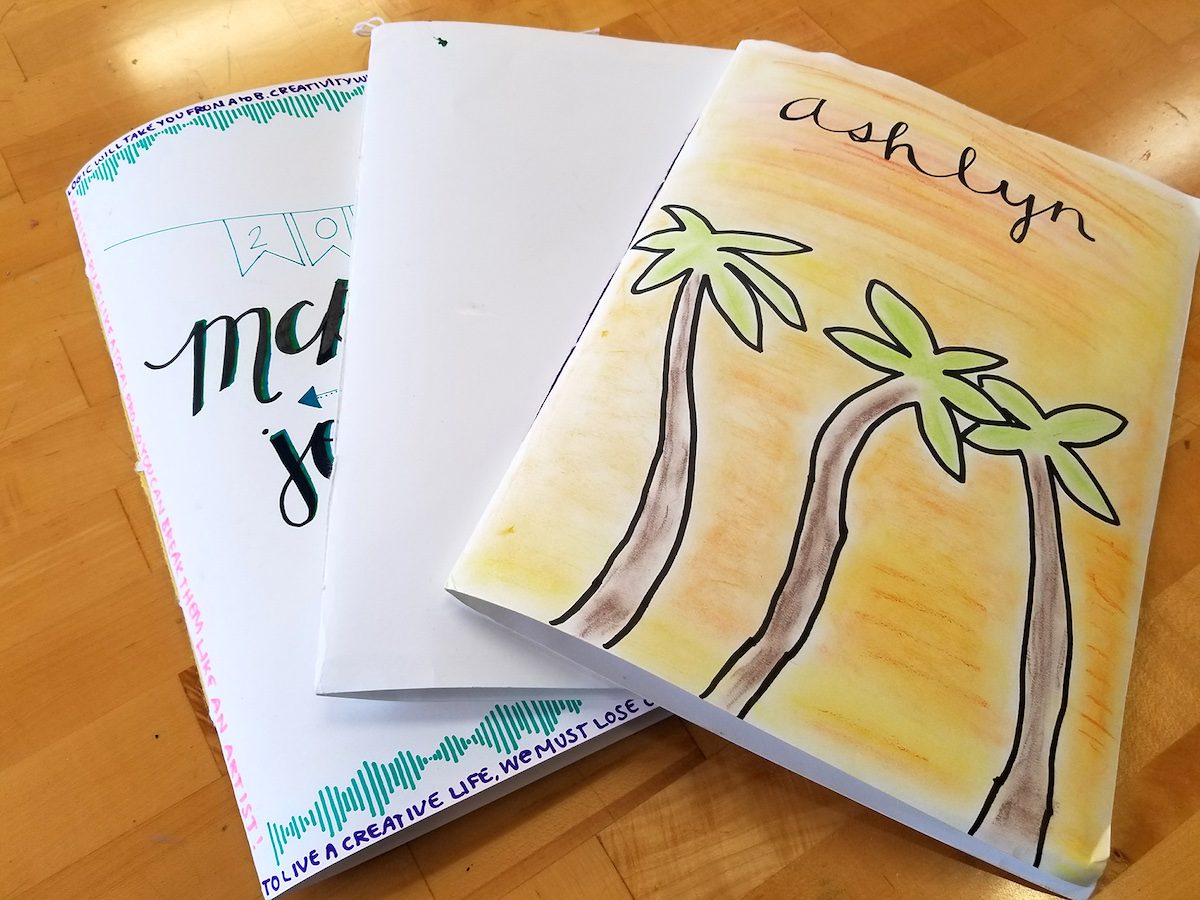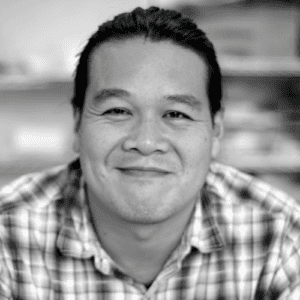I am a big believer in focusing on process over product in the art room. Sure, perfectly rendered drawings and sculptures are nice. But, helping a student understand the path they took to create their work and the value of the creative process is much more rewarding. Therefore, many of my assignments have “process” and “reflection” as core components.
One project that has been integral in encouraging students to experiment and reflect in my classroom is Process Journals.
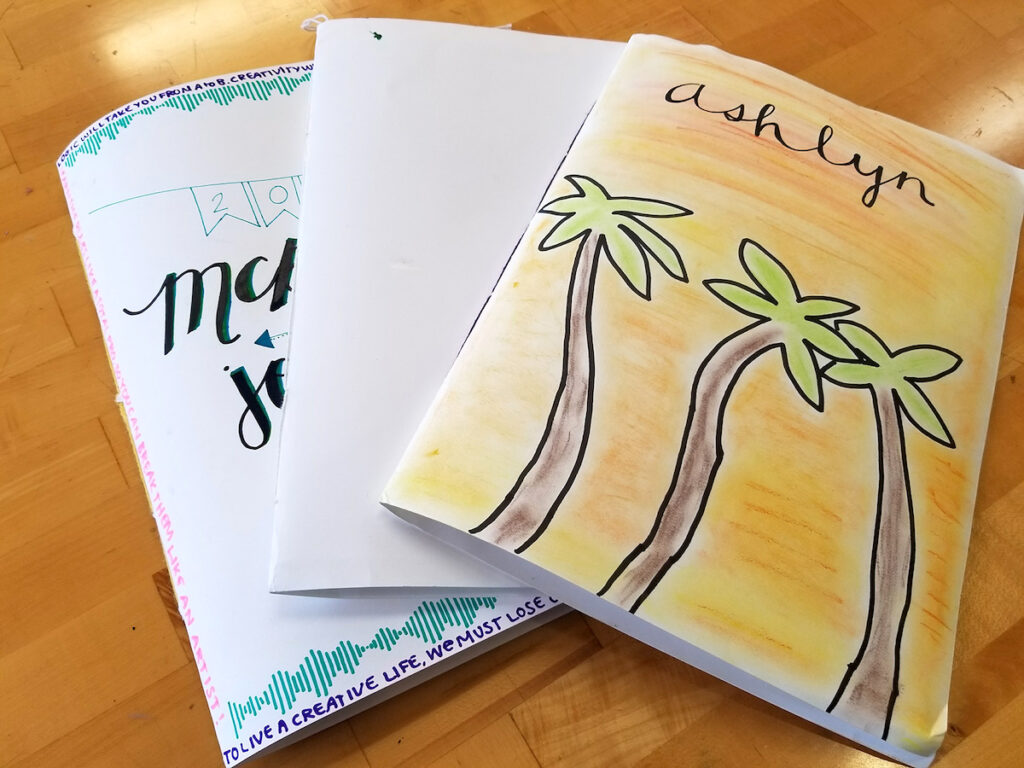
What is a Process Journal?
I came across the idea of Process Journals while collaborating with one of my colleagues. The idea is that, at different points throughout the semester, students complete a series of open-ended prompts. Each prompt has a single, specific material associated with it. The only parameter is that students must use the provided material in their work. They can use whatever other materials they need to complete the project.
Here are a few items my students have been challenged to use:
- Compostable utensils (spoons, forks, knives)
- Leaves and sticks
- Breakfast cereals
- Rocks or pebbles
- Paper clips
- Pine cones
The beauty of Process Journals is that whatever route students choose to take will work. This is because it reflects their creative process.
I describe Process Journals to my students like this:
Process Journals are a way for you to figure out how to approach a situation or problem in a different manner, and to explore mixed media in art. It’s a time where you have the freedom to do whatever you want … with the items given to you.
You must use the item or medium given to you as you create your piece, but otherwise, you are invited to create anything you can imagine. The point is for you to let your artistic creativity run wild. The more you allow yourself to loosen up and let your intuitions freely roam, the more you are developing your creativity. Try new things that you have never tried in art before. Have fun!
The prompts provide a nice change of pace from regular class projects and work to push students out of their comfort zones. With no model to work toward, they end up having to find their own way. They bring in their interests, address questions that are on their minds, and take the project in directions we as instructors couldn’t have begun to imagine.
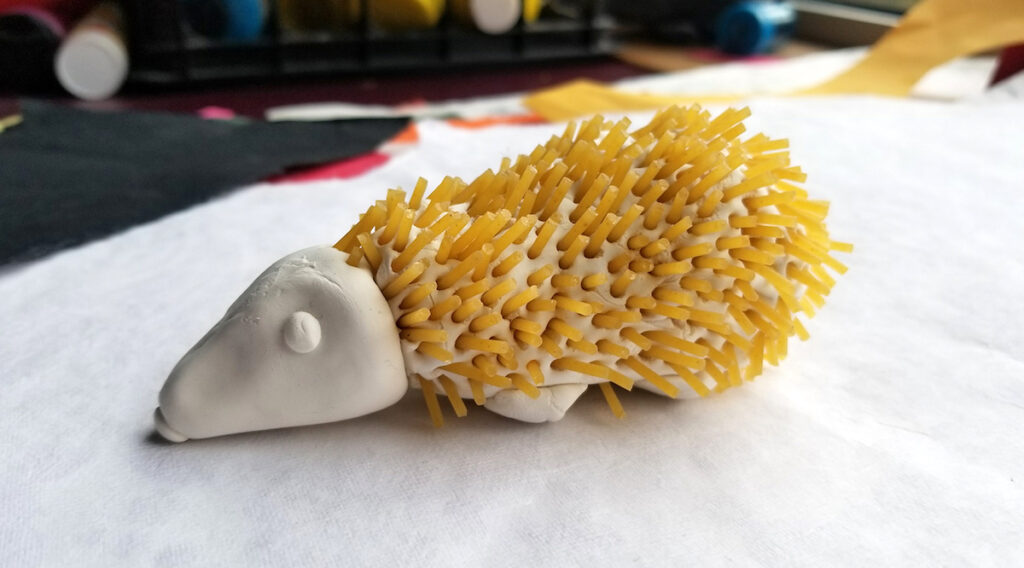
You can use Process Journal prompts to fill interim spaces between major assignments. Or, you can also leave them open for students to return to whenever they finish a project early. It’s helpful to establish the routine and timing of Process Journals early in the semester. That way, your students will know when to expect these opportunities.
For some teachers, creating additional criteria or parameters to work within helps keep the project from spiraling out out control. You’ll need to gauge what feels most comfortable for you as you implement this idea.
If you’re looking for even more ways to infuse creativity and problem-solving into your curriculum, look no further than the AOE course Creativity in Crisis. You’ll learn specific strategies to take into your classroom to enhance creativity and cultivate learners who are prepared for the demands of our ever-changing world.
The Benefits of Process Journals
Persistence
When I worked for a community art center collaborating with artists, I often had the opportunity to see their creative processes and how they approached artmaking. What I learned has informed my classroom practice. Some artists worked at all hours of the day and thought of little else. Others treated artmaking like a regular day job. These artists were in the studio by 9 am and left at 5 pm.
Their routine blocked out specific time for creating work. Regardless of what they accomplished, the time in the studio was important. They were engaging in a process where things might flow along or be slow and sluggish. Either way, they persisted in the process.
Problem-Solving
Another idea I’ve brought into my classroom from this time came from a conversation I had with an artist. He told me he viewed each project or piece of work as a visual problem or visual challenge. Framing it this way allowed him to approach the artmaking process from a problem-solving perspective. He tested various hypotheses to determine the best solution for the “problem.”
When we look at how this idea is reflected in education, the parallel is especially striking. The constant messaging around education is to develop creative thinkers who can problem solve and think outside the box. This metaphor for the creative process demonstrates the way artmaking embodies these highly valued skills.
Process Journals address both of these points. They are a regular exercise students must engage with throughout the semester. And, students must spend time thinking about the question/material being posed and work to solve the problem.
The Results
It’s fascinating to watch students work on these projects. They all come up with such different solutions despite starting with the same materials. Many students begin with sketches, working in their journals. Early on, students tend to try and build their work inside their journals, creating 2-D representations of their ideas. But as the semester rolls along, they begin thinking about the work leaving the page and it often manifests as a distinct sculptural object.
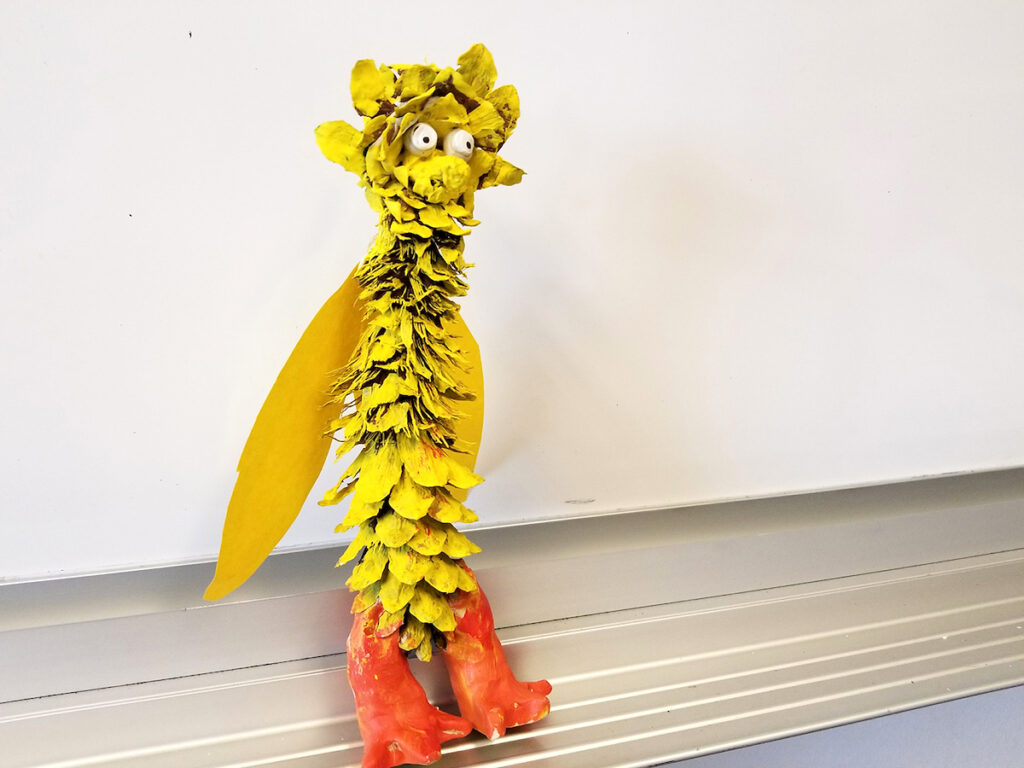
As I mentioned, aside from the required material, students can work with just about anything else they find in the art room. For some students the dizzying possibilities this creates make it difficult to focus. But after a couple rounds, they get used to the idea that they are in charge of the process.
An important component of this project is the reflection piece.
After students create their work, they consider the following questions:
- What was your first thought when you received the Process Journal material and why?
- What did you do that you liked the most about this Process Journal?
- What would you change if you had the chance to do it again?
- What other media did you use in this Process Journal?
- How did the different media help you explore your creativity?
By asking them to look back at the process and articulate their thoughts, students get to see there isn’t necessarily one way to be creative and begin to better understand their own creative process.
To wrap up each project, students photograph their work and add it to their online journal. After this, students are free to decide what to do with it. Some students take their things home, some leave them on their classroom shelves, and some toss them in the trash. Whatever avenue they choose is OK. After all, it’s all about the process!
How do students in your classroom engage with unexpected materials and open-ended projects?
What projects do you use to help students reveal the creative process?
Magazine articles and podcasts are opinions of professional education contributors and do not necessarily represent the position of the Art of Education University (AOEU) or its academic offerings. Contributors use terms in the way they are most often talked about in the scope of their educational experiences.
